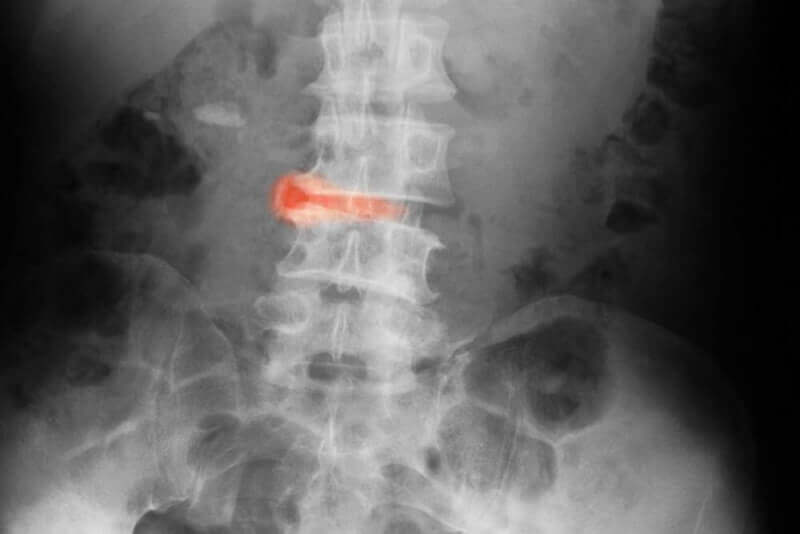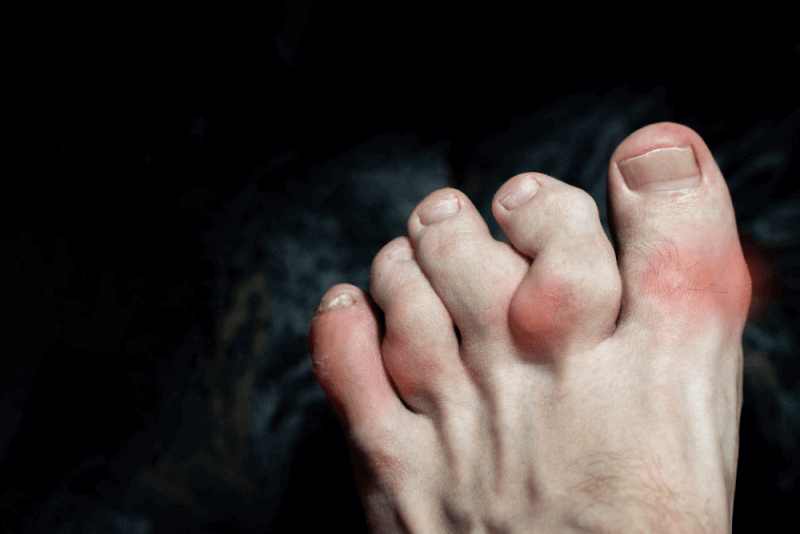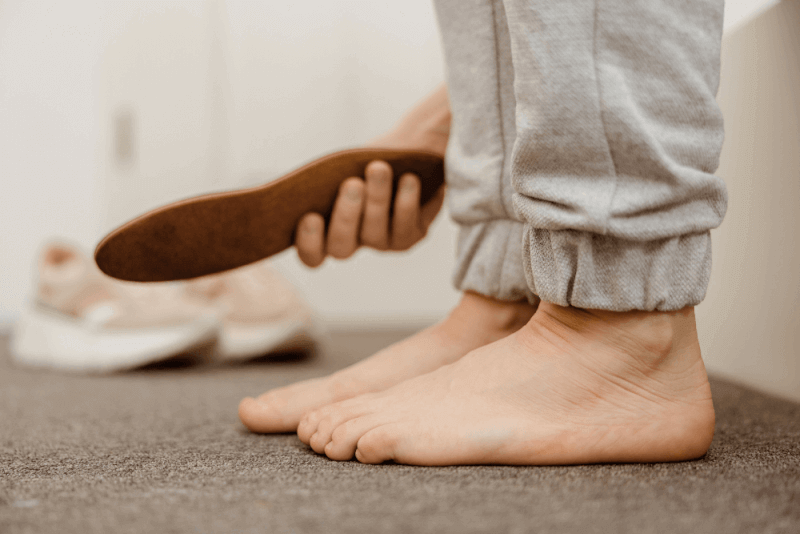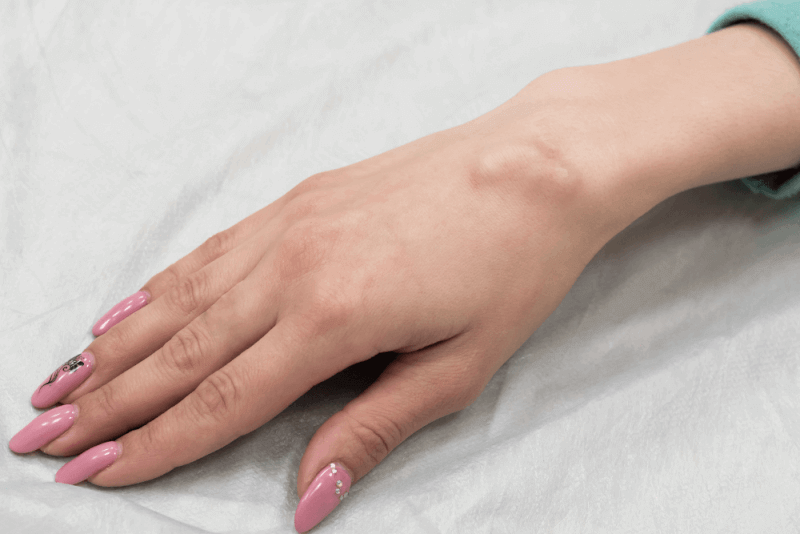30 Second Summary
- It is a chronic inflammatory rheumatic disease affecting the spine and joints.
- Symptoms include low back pain, morning stiffness and limited mobility, back and neck pain, rib pain, fever, fatigue, weight loss and loss of appetite.
- It is more common in men than in women. It occurs between the ages of 15 and 30.
- If left untreated, ankylosing spondylitis can lead to spinal calcification and hunchback.
What is Ankylosing Spondylitis?
Ankylosing spondylitis, one of the inflammatory rheumatic diseases, affects the joints. The most characteristic symptoms include waking up in the morning with lower back pain, stiff back and neck.
In some patients, the disease causes the spine to become completely passive and patients have difficulty turning their heads. If left untreated, the disease evolves into a hunchback and, in the final stage, neck deformities.
Ankylosing spondylitis, a type of arthritis that affects the spinal cord, causes inflammation of the joints of the spine, causing patients to experience severe pain. In its later stages, it also causes the formation of new bones in the spine of patients.
On the other hand, ankylosing spondylitis can also cause stiffness and pain in areas such as the shoulders and hips. The treatment of ankylosing spondylitis, which can also affect the lungs, eyes and heart, should be seen as a process.
What are the Differences Between Ankylosing Spondylitis and Arthritis?
Often confused with arthritis, ankylosing spondylitis is a chronic inflammatory disease of the joints. If the disease progresses too far, it causes patients to lose their mobility. The reason why the disease is often confused with arthritis is that it causes calcification of the spine. However, while arthritis can affect people of all ages and all organs, ankylosing spondylitis only affects the spine.
Ankylosing Disease Symptoms
Symptoms play an important role in the diagnosis of ankylosing spondylitis. Early recognition of these symptoms, which are seen in a wide variety, naturally paves the way for early diagnosis.
- The first symptom is back pain.
- Increasing severity of low back pain.
- Pain in the hips, back, neck, shoulders and ribs.
- Hunchback
- Severe back pain in the morning,
- Limitation of movement and stiffness, especially in the morning,
- If the rib joints are affected, breathing may become uncomfortable.
- Pain when moving,
- Difficulty walking,
- Fatigue
- Pain relief and relief with physical activity or exercise.
Causes of Ankylosing Disease
Today, the causes of ankylosing spondylitis are still unknown. Although hereditary factors are known to be effective, the presence of Reiter's syndrome, microbes and environmental factors are also thought to be effective in the development of the disease.
Stages of Ankylosing Spondylitis
As with many other diseases, ankylosing spondylitis also has stages. These stages are particularly important in planning treatment.
Early Stage
Ankylosing spondylitis is a disease that affects the spine and the first complaint of patients is low back pain that does not go away and gets worse. For this reason, misdiagnoses such as herniated discs are encountered. If low back pain occurs before the age of 40 and is relieved by exercise, it is likely to be an early stage of ankylosing spondylitis. If caught at this stage, the disease is stopped before it progresses.
Advanced Stage
The stage that is not diagnosed at an early stage and results in an increase in symptoms is called advanced stage. Low back pain occurs as a result of misdiagnosis and failure to treat the disease.
Ankylosing spondylitis exacerbation period
Patients with ankylosing spondylitis experience frequent flare-ups throughout their lives. Studies on this subject have found that patients enter 3 exacerbation periods that can last up to 2 weeks in 3-month periods.
There are two different types of exacerbation in ankylosing spondylitis. The first of these types are localized exacerbations. In this type of flare-up, only one part of the body is affected. In addition to pain, patients experience immobility and fatigue in this area.
Another type of exacerbation seen in patients with ankylosing spondylitis is generalized exacerbation. In this type of seizure, which is more severe than the localized type, patients feel pain in various joints. Patients also experience flu-like symptoms, tenderness and muscle spasms.
Some of the symptoms seen during the exacerbation period may persist after the period. Long-term symptoms of an exacerbation include the following.
- Jaw pain and stiffness
- Ongoing back pain
- Burnout
- Pain and stiffness in other joints
- Difficulty breathing
- Difficulty moving
- Loss of flexibility
- Digestive system problems
- Uveitis, defined as inflammation in the middle layer of the eye
What are the Risk Factors for Ankylosing Spondylitis?
Some patient groups are considered more at risk of developing ankylosing spondylitis. These risks can be categorized under the following headings.
Genetics
Ankylosing spondylitis is known to be a hereditary disease. Almost all genetic tests performed to diagnose the disease, which is associated with the HLA-B27 gene, are positive. This gene is thought to attack the immune system and damage the spine. In addition, ankylosing spondylitis is also seen in 20% of the children of patients.
Age
Ankylosing spondylitis is seen before the age of 40. For this reason, ankylosing spondylitis should be considered among the possibilities in low back pain experienced before this age.
Gender
Ankylosing spondylitis is 3 times more common in men than in women. Men are therefore more at risk.
Reiter Syndrome
This disease, which causes deformation of the joints as a result of an expanding infection in any part of the body, also increases the risk of ankylosing spondylitis.
Intestinal Diseases
A large proportion of people with various bowel diseases also have ankylosing spondylitis.
What are the Complications of Ankylosing Spondylitis?
In addition to its symptoms, ankylosing spondylitis can also cause some complications.
Hunched Back
Due to the damage to the spine, it is highly expected to see hunchbacks in patients. Slouching can occur both after and during treatment.
Flattening of the Waist
A congenital curve in the lumbar region can be flattened by ankylosing spondylitis.
Heart Failure
Disorders in the spinal joints due to ankylosing spondylitis can also affect the heart muscles. These abnormalities in the heart muscles cause patients to tire more quickly and become mentally weak.
Inflammatory Bowel Disease
Inflammatory bowel diseases can be a cause or a consequence of ankylosing spondylitis. For this reason, it is not known exactly which one initiated this cycle.
Cauda Equina Syndrome
Cauda equina syndrome, defined as compression of the nerves in the coccyx, is extremely serious. In addition to causing severe pain, it can cause paralysis if left untreated.
How is Ankylosing Disease Diagnosed?
In the diagnosis of ankylosing spondylitis, the patient's history is evaluated together with tests and imaging methods.
Physical Examination
During the physical examination, the infection sites are first checked. During the examination, patients are checked for pain in the lower back, neck, heel, pelvic joints and chest area. In addition, it is also checked whether the patients' movements are restricted by their spine. Finally, experts should also evaluate the occurrence of infection in the digestive tract of patients.
X-ray
X-rays are used to check for changes in the joints due to inflammation. In particular, any change in the pelvic joints is one of the key points in the diagnosis of the disease.
MR
In addition to X-rays, MRI results may also need to be evaluated during the diagnosis of ankylosing spondylitis.
Laboratory Tests
Among the most helpful tests for diagnosis are blood tests. These tests are used to check whether patients have a defect in the HLA-B27 gene. Blood tests also measure the level of infection in the blood.
Ankylosing Disease Treatment Methods
Ankylosing spondylitis must be treated. Otherwise, patients' quality of life is seriously affected. There are different methods for the treatment of the disease. The most important indicator of which treatment methods should be applied to patients is the stage of the disease.
Medication Therapy
Medication is one of the most commonly used treatment options for ankylosing spondylitis. In particular, the non-steroidal anti-inflammatory drug group gives positive results in approximately 65% of patients. This group of drugs provides significant relief of stiffness and pain in patients. Non-steroidal anti-inflammatory drugs are divided into three categories.
Naproxen
The working principle of the Naproxen group of medicines is to reduce the mediators that cause pain and inflammation in the body. In addition, it is also built up in the blood longer than other drug groups. Due to these properties, it is one of the first preferred drugs in the treatment of ankylosing spondylitis and is not available without a prescription in our country. The drug is known to cause carsickness. However, to prevent this, the medicine must be taken with food.
Indomethacin
Another type of medication used in the treatment of ankylosing spondylitis is indomethacin. It is important that patients are clearly informed about how this medicine should be used and its side effects.
Diclofenac
It is a medicine used to reduce pain and inflammation in patients with ankylosing spondylitis. This drug, which is not narcotic but has the strongest analgesic effect, is used for pain relief. This medicine is administered as an injection and should not be used for more than two days. In addition, the drug has the ability to mask the symptoms of infection.
Tumor Necrosing Factor Blockers
It is a highly effective treatment method in the treatment of rheumatologic diseases, especially ankylosing spondylitis and rheumatoid arthritis diseases. There are 4 different tumor necrosing factor blockers available in our country and their efficacy has been proven. These blockers are as follows.
- Infliximab
- Adalimumab
- Etanercept,
- Golimumab
Physical Therapy
Physical therapy has an important place in reducing the severe pain experienced in ankylosing spondylitis, which is seen in one out of every 200 people in our country. Physical therapy methods used in the treatment of ankylosing spondylitis include stretching, posture, strengthening and respiration.
In order to achieve successful results from physical therapy in the treatment of ankylosing spondylitis, there are some points that patients should follow. First of all, patients should not smoke. They should also avoid sleeping without a pillow and continue to exercise regularly. In addition, care should be taken not to pull the knees to the abdomen while sleeping and to protect the spine, it is necessary to lie face down.
Physical therapy exercises include swimming. You should also focus on exercises in which the spine bends backwards.
Kinesitherapy
Kinesitherapy, which is one of the sub-branches of physical therapy, is the treatment of various parts of the legs, arms and torso with forced movements and movement and support devices. For kinesitherapy, patients do not need to make any effort.
Surgical Treatment
Surgical treatment methods are used if other treatment methods do not yield results. Surgery is an option especially in the treatment of advanced patients. This treatment option is used for correction, especially in patients with excessive forward curvature of the spine. However, since they are very risky surgeries, they cannot be applied to every patient.
Summary of Surgery
Duration of Surgery 2-6 hours
Anesthesia Method: General
Duration of Hospitalization: 3-7 days
Return to Work Time: 6-8 Weeks
Arthroplasty
Arthroplasty is defined as a surgical intervention to restore the function of a joint that has lost its function. This method applies to patients with ankylosing spondylitis for whom surgery can be performed.
How does Ankylosing Spondylitis Progress?
If patients are not diagnosed or treated for ankylosing spondylitis, the disease progresses.
Humpback
Humpback is seen in patients who are not treated or whose treatment is started at an advanced stage. However, hunchback is not seen in patients whose treatment is started at an early stage.
Nutrition of Ankylosing Spondylitis Patients
There is a lot of information about the nutrition of patients with ankylosing spondylitis. However, a significant part of this information contradicts each other. For this reason, it is important to pay attention to the following points, which are found in many different sources and are interconnected.
First of all, patients should completely avoid milk, dairy products and gluten. They are also advised to drastically reduce their meat consumption. Meat products also include fish. Since the lack of fish consumption will create an omega 3 deficit, it is important to take this oil as a supplement. Flaxseed and walnuts are prominent herbal sources to meet omega 3 fats. In addition, all forms of gluten should be avoided. However, whole grains in particular worsen an already existing infection in the body. For this reason, it is especially recommended to avoid whole grain products.
Another important point to be considered in nutrition is smoking and alcohol consumption. Especially in men who smoke, the symptoms are much more severe. Quitting smoking leads to a significant reduction in pain and stiffness.
This one In addition, a significant proportion of patients with ankylosing spondylitis also experience intestinal problems. In this case, yeast foods should be avoided. It is also necessary to avoid packaged foods, added sugars, trans and saturated fats and, of course, foods containing preservatives.
Pulses have recently been vilified in many sources. However, lectin in pulses can be purified by processes such as soaking in water. For this reason, care should be taken to remove the lectin before consuming pulses.
In addition, tea, coffee and acidic drinks should be avoided. Because these are harmful to bones as they negatively affect calcium absorption.
In addition, patients are recommended to consume bone broth and trotter soup. Finally, getting rid of excess weight will also reduce the pressure on the joints, resulting in less pain.
Ankylosing spondylitis exercises
For patients with ankylosing spondylitis, exercises that stretch the spine, such as yoga and plates, are generally recommended. This is because the inflammation that affects the joints causes patients to lose flexibility and mobility in their spine over time. To prevent this, patients should exercise regularly. Performing the right exercises will help stop the progression of the disease, as well as help patients maintain their mobility and reduce the severe pain caused by the disease. For patients starting exercise for the first time, the movements can be painful. However, as the muscles relax over time, the movements can be performed more comfortably. Exercises that are particularly recommended to ensure spinal flexibility include the following:
Cobra stance
The cobra pose is one of the most suitable exercises for stretching the back muscles and rounding the spine. The steps that patients should follow for this posture are as follows.
- Lie face down on the floor.
- Patients need to slowly rise up on their elbows to allow the chest to rise up.
- Patients whose movement is not restricted can also do this movement later by standing on their hands. This allows the spine and surrounding muscles to stretch more.
Patients should repeat this exercise 3 to 5 times a day and hold the position for 10 to 20 seconds.
Wall squat
In this exercise, which is applied to ensure better posture, patients should stand in a sitting pose in a chair by leaning against the wall. This exercise, which is enough to be repeated 3 to 5 times a week, should be done in 3 to 5 sets and the duration of the sets should be 5 to 10 seconds. The steps to be taken in order to be able to exercise are as follows.
- First of all, when standing, the back encounters a wall.
- Then the feet remain stationary and slowly slide downwards.
- Stand in a position with knees bent and thighs parallel to the floor.
Plank
Patients who have never done the plank before, which is extremely efficient for strengthening the center of the body, are recommended to start with the easy version. Those who start plank exercise for the first time should first place their arms on a kitchen counter or a high place with their feet back and stand like this for 5-10 seconds. After strengthening the central muscles, you can move on to the normal plank movement. The steps to be followed for the plank movement are as follows.
- Lie flat on the mat.
- Stand up on the elbows with the arms facing forward.
- Then the legs and buttocks are lifted with the support of the fingertips.
- The head is kept at the level of the spine.
It is enough to do the movement 3 to 5 times a week. The number of repetitions is recommended to be 3 to 5 times. As the muscles get stronger, the time in the plank can be extended.
Standing leg lift
It is recommended to do this movement 3 to 5 times a week to strengthen the hip muscles. The number of repetitions of the movement in which both legs are worked separately is 10-15. The steps to be followed for exercise are as follows.
- First hold on to the railing or the back of a chair.
- Then the knee of the leg to be lifted is slightly bent.
- Then the leg is lifted to the side.
- The leg is brought to the starting position.
- Again, the same leg is lifted backwards at a 45-degree angle.
- Return to the starting position.
- The procedures are done separately for both legs.
Chin lift
The chin stretching exercise, which stretches the neck muscles, should be done 2 times a day and 3 to 5 repetitions. The steps to be followed for chin stretching exercise are as follows.
- Lie on your back.
- The chin is lowered towards the chest without lifting the head from the floor.
- Stay in this position for 5-10 seconds.
Neck tightness and headaches may occur in people practicing the chin-stretching exercise for the first time. However, if the exercise is continued, the neck muscles can be strengthened and the tension caused by the disease can be reduced.
Shoulder roll
This stretching should be done every day and 5-10 repetitions. The steps of the shoulder rotation movement are as follows.
- First of all, it is necessary to stand upright and upright.
- Then the shoulders are slowly pulled towards the ears.
- Then the shoulders are moved backwards and downwards.
- The shoulder blades also need to be rounded during the movement.
Hip stretching
With the hip stretching movement applied to alleviate the low back pain of the patients, the muscles in the front part of the hip are lengthened. It is one of the exercises that should be practiced every day. The steps of the hip stretching movement are as follows.
- First, while standing, take a big step forward.
- The back knee is placed on the floor.
- Care should be taken to ensure that the back is in an upright position.
- It is also important not to lean forward from the hips.
- In this position, tension should be felt in the front and back muscles of the thigh bone of the leg on the ground.
- To increase the stretch, the hip is pushed slightly forward and stay in this position for 20-30 seconds.
Chest stretching
It is another exercise that is important because it allows the chest muscles to stretch. This is because the deformation of the spine caused by the disease leads to compression and shrinkage of the thorax. This causes respiratory problems in patients. The steps to follow for chest stretching exercise are as follows.
- First of all, this exercise should be done in a space where the walls form a corner.
- Patients should face the corner and arms should be raised and palms rested against the wall.
- The shoulder blades are then brought closer together.
- It is enough to stay in the position for 20-30 seconds.
The life of patients with ankylosing spondylitis
Treatment of ankylosing spondylitis is extremely important in terms of stopping the progression of the disease and ensuring the mobility of patients. In addition, it is very important for patients to lead an active lifestyle in order to reduce the symptoms and severity of the disease.
Active lifestyle
The most important factor in controlling the disease in patients with ankylosing spondylitis is an active life. Regular exercise is extremely important to maintain the mobility of the back and to prevent stiffening of the spine by maintaining its flexibility.
Too much rest in patients with ankylosing spondylitis leads to increased spinal stiffness. In cases where patients are unable to exercise due to pain, they should consult their doctor or physiotherapist.
Patients are advised to exercise after a hot shower. Especially for the elimination of morning stiffness, it enables patients to perform their exercises easily without the need to strain. Patients who experience pain during exercise can use prescribed pain medication.
The most suitable sports for patients with ankylosing spondylitis include plates, yoga, swimming, t'ai chi. Apart from this, there are many types of exercises that will ensure the mobility of patients. For this reason, it is extremely important for patients to determine the exercises they enjoy doing in order to maintain the continuity of the exercises.
Work
A significant proportion of patients with ankylosing spondylitis can continue to work. However, patients who work in a physically demanding job may need some task changes in their workplace. For this reason, the illness should be discussed with managers at work. People with ankylosing spondylitis have some rights just like people with other disabilities. Learning about these rights will help to find ways for patients to work in the workplace without health difficulties.
Pregnancy and sexual intercourse
It is normal for patients with ankylosing spondylitis to feel pain during sexual intercourse. To prevent this, you can try different positions or use painkillers before sexual intercourse. In addition, ankylosing spondylitis can cause fatigue, which can lead to sexual reluctance. In this case, patients need to communicate openly with their partners and explain how the disease affects them.
There is no harm in patients with ankylosing spondylitis using birth control pills. However, before using these pills, a doctor should be consulted and the medicines recommended by the doctor should be used.
Patients who want to have children and are undergoing treatment should share these plans with their doctors. Because some of the drugs used in treatment, such as methotrexate, affect the fertility of both male and female patients. Biological treatments are also considered safe in the early stages of pregnancy, but should be stopped in the later stages.
Ankylosing spondylitis during pregnancy is not harmful for both the baby and the mother. However, there is no pain relief during this period. In addition, if the mother's spine is stiff due to illness, the possibility of epidural delivery is eliminated. In addition, if it is difficult to open the legs due to the condition of the spine, then a caesarean section should be planned.
Can children be infected?
People with ankylosing spondylitis are very unlikely to pass this gene on to their children. However, patients who are concerned about this issue will receive the most accurate information from their doctors. Some patients with ankylosing spondylitis request screening for the disease-causing HLA-B27 gene. However, the presence of this gene in children is not a guarantee that they will have the disease. Many people do not develop the disease even if the gene is found.
Sleep
Fatigue and pain, which are among the symptoms of the disease, prevent patients from getting quality sleep. However, quality sleep makes it easier to control the patient's symptoms. For this reason, steps should be taken to improve the quality of sleep of patients. These steps include the following.
- Taking a hot bath before going to sleep
- Using a hot water bottle or electric blanket
- Avoiding drinks that affect sleep quality such as tea, coffee and cola from noon onwards. Also not to use medicines containing caffeine after the specified period.
- Going to bed at the same time every night and getting up at the same time every morning
- Not sleeping during the day
- Keeping the bedroom clean and tidy
- No screen exposure for 1 hour before bedtime
- Not eating anything for 2 hours before going to sleep
- Regular exercise
- Sleeping on a medium-firm mattress
Shoe selection
Some patients with ankylosing spondylitis develop plantar fasciitis, which affects the heels and bones of the feet. In case of this condition, which causes pain in the feet, patients need to affect the insoles called orthotics in the shoes to support their feet more. This keeps the lower limbs in the correct position and patients feel less pain.
In addition, a podiatrist should also be consulted. Because some patients need custom-made insoles.
Posture
In severe cases of ankylosing spondylitis, there is a serious deterioration in the patients' posture. This causes the spine to bend too much, putting extra strain on the spine. For this reason, patients should always pay attention to their posture. Patients with ankylosing spondylitis should make sure that the shoulders are relaxed and backward and the chin is raised while standing. In addition, among the points that patients should pay attention to in the sitting position are the following.
- Do not lean on the elbows
- Chairs with hard backs or straight backs should be preferred.
- When sitting in a chair, the buttocks should touch the back of the chair.
- A pillow can be placed at the waist for extra support.
- The seat needs to be at the right height.
- The knees should be at right angles and the feet should be fully planted on the floor.
- Do not stay in the same position for a long time.
Posture control
Patients should check their posture once a month and share any changes with their doctor. Taking photographs during this check will make the differences more clearly visible. The things to be done in posture control are as follows.
- Heels, hips and shoulders lean against the wall as much as possible.
- After standing in this position for 5 seconds, relax and repeat.
- The movement must be repeated 3 times.
Vehicle use
Patients with ankylosing spondylitis are not allowed to drive a car. However, they are advised to pay attention to the following points while driving.
- On long journeys, you should take breaks to stretch and walk.
- Patients with severe neck or back pain may require the use of special mirrors, sensors and cameras to make it easier for them to park their vehicles.
- Patients with neck stiffness are more vulnerable to injuries. For this reason, the head should be tilted back while driving. In addition, care should be taken to ensure that the neck support is in the correct position.
Complementary medicine
In general, alternative medicine treatments are safe. However, they may trigger some symptoms and should be discussed with the doctor before starting treatment. In addition, it is one of the important points that physicians who will practice complementary medicine should be licensed.
If complementary medicine treatment is decided upon, it should be closely monitored to see if it is beneficial. Patients are advised to stop treatment if there is no benefit.
Acupuncture is one of the most preferred complementary medicine techniques for patients with ankylosing spondylitis. Acupuncture treatment helps to control pain but does not stop the progression of the disease.
In addition, manipulation techniques to restore the mobility of muscles and joints in some parts of the body are not recommended for patients with ankylosing spondylitis as they can cause spinal injuries.












